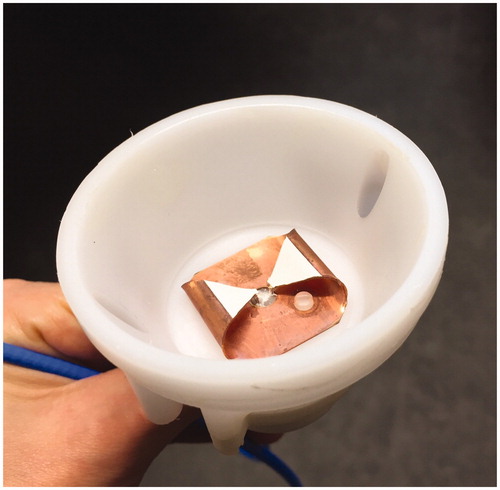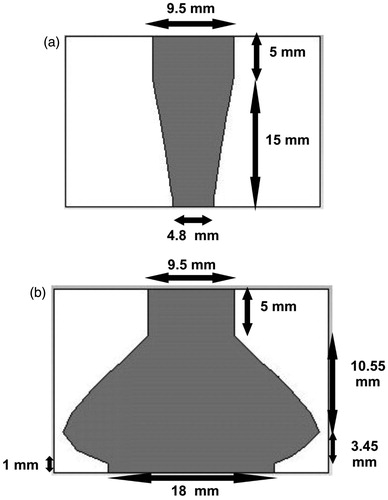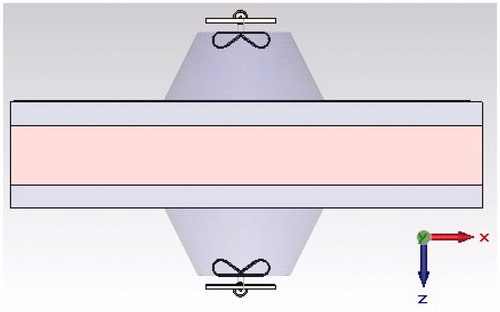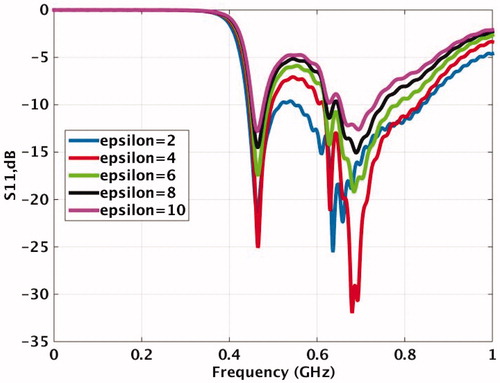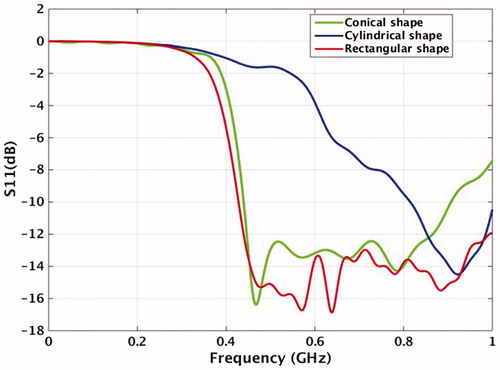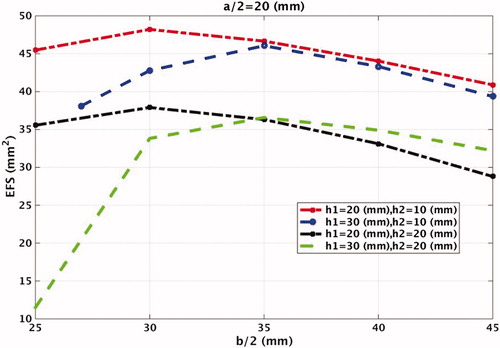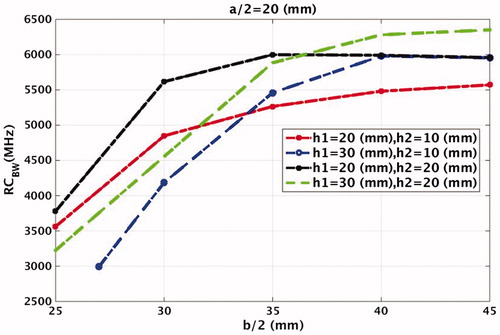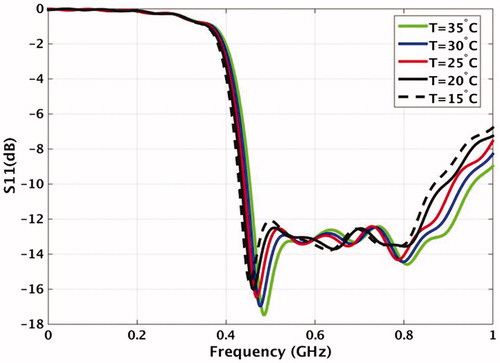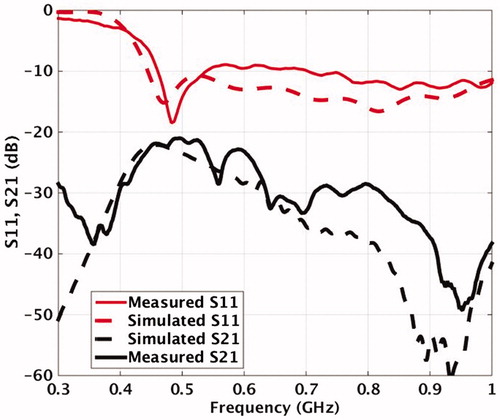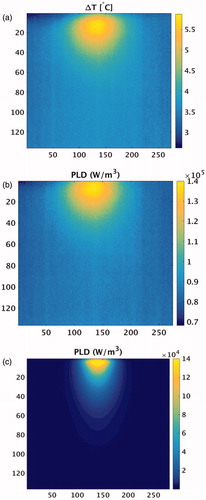Figures & data
Figure 1. (a) The model of the self-grounded Bow-Tie antenna. (b) Schematic drawing of the manufactured antenna with its dimensions indicated, top and side views.

Figure 5. (a) Back-to-back balun and (b) simulated reflection and transmission coefficients of the balun in back-to-back configuration.

Figure 6. Variation of the reflection coefficient of the antenna for various pin widths (simulated).
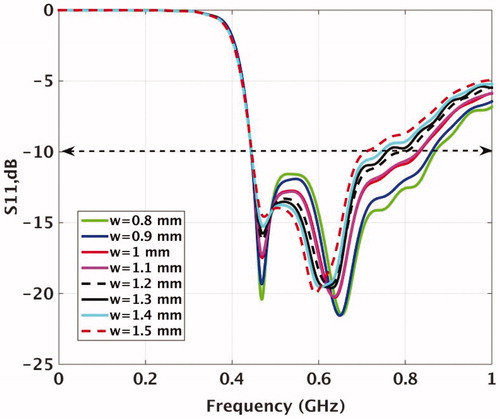
Figure 7. The effect of dielectric layers with 7.7 mm length on surface current density of the antenna at 500 MHz. (a) No dielectric and (b) dielectrics.
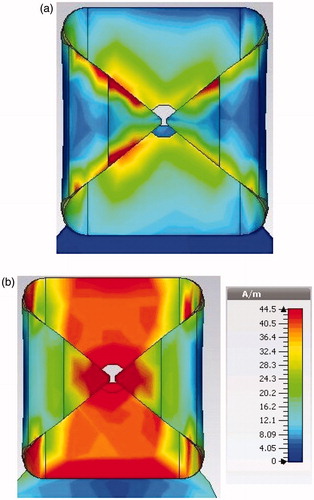
Figure 9. The effect of dielectric layers on E-field of the antenna at frequency 430 and 700 MHz along the cross section of the antenna at y = 0. E-fields are in V/m.
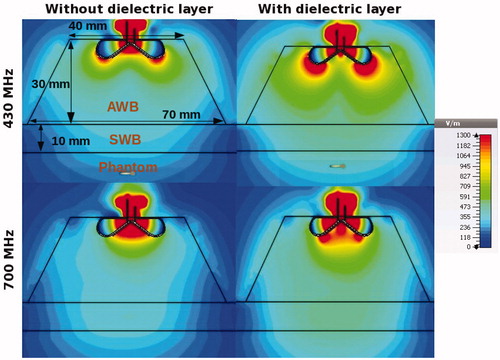
Figure 10. Impact of dielectric layers on reflection coefficient of antenna immersed in large and limited AWB. The red and blue curves show the S11 without and with Teflon in conical shape AWB, respectively. The black and green curves show the S11 without and with Teflon in rectangular shape AWB, respectively.
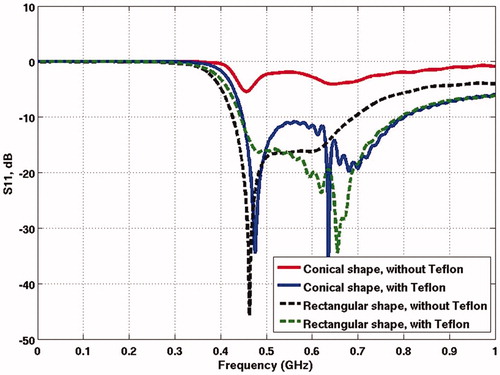
Figure 12. The power loss density distribution in the muscle phantom for different AWB shapes. (a) Rectangular AWB without dielectric layer on the antenna arms. (b) Rectangular AWB with dielectric layer. (c) Cylindrical AWB. (d) Conical AWB.
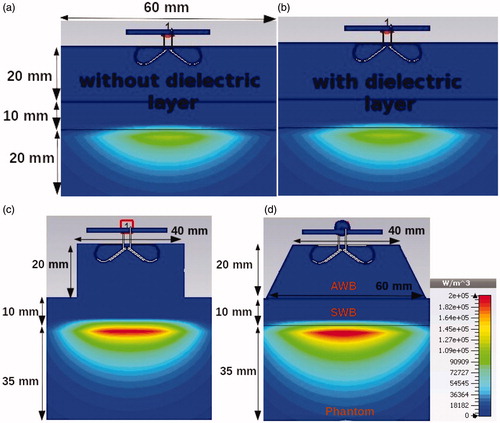
Table 1. pfTS in terms of AWB dimensions.
Figure 17. Simulated power loss density distribution in muscle phantom for various frequencies. (a) 430 MHz, (b) 500 MHz, (c) 600 MHz, (d) 700 MHz and (e) 900 MHz.
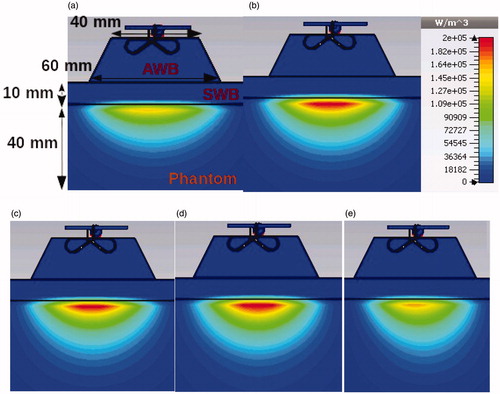
Figure 18. The prototype of the manufactured antenna, including the UWB balun and the plastic enclosure.
